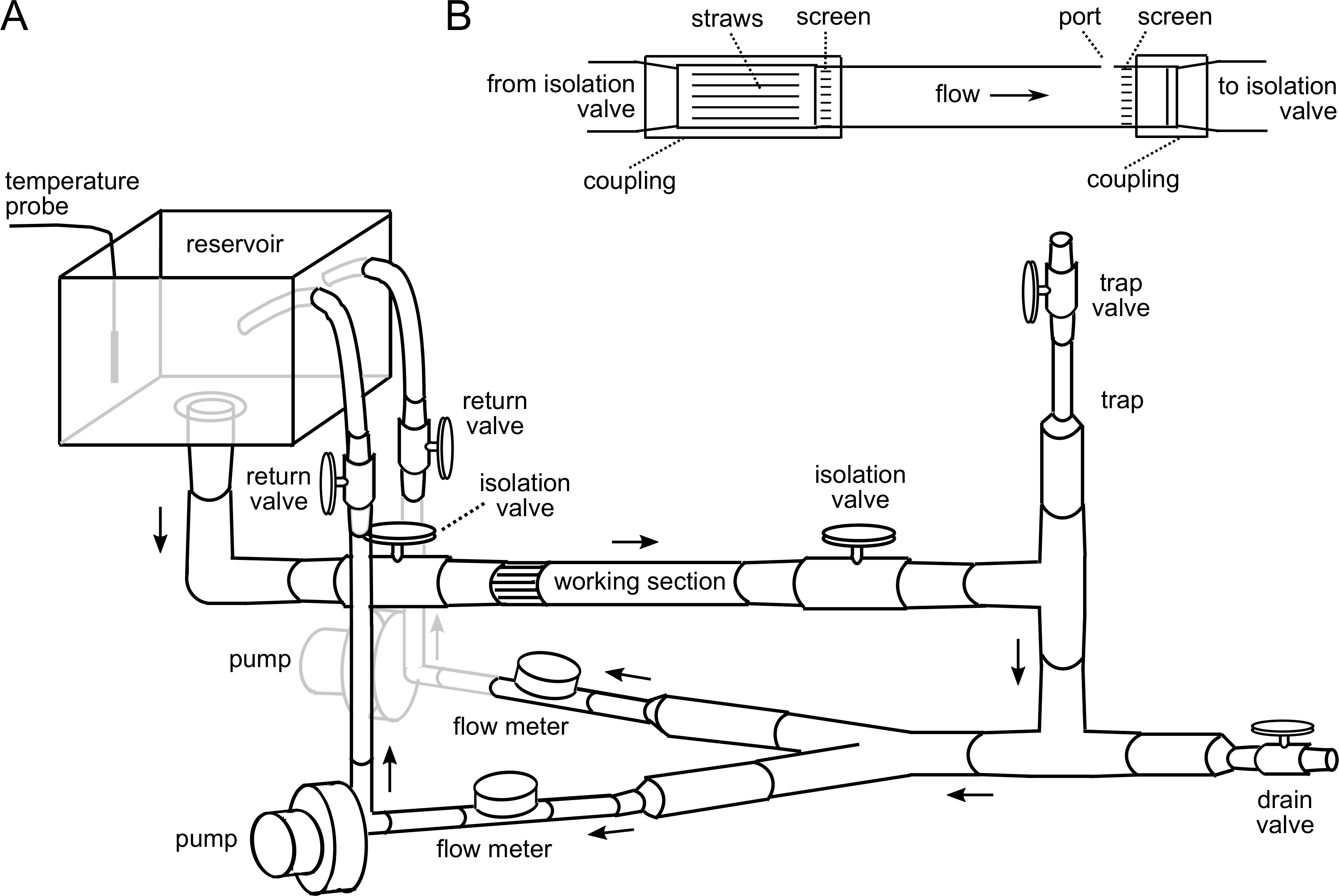An open source microcontroller based flume for evaluating swimming performance of larval, juvenile, and adult zebrafish
Zebrafish are a preferred vertebrate model for delineating genotype-phenotype relationships. One of the most studied features of zebrafish is their exceptional swimming ability. By 7 days postfertilization (dpf), zebrafish spend over two-thirds of their time engaged in spontaneous swimming activity and several months later they are capable of attaining some of the fastest swimming velocities relative to body length ever recorded in the laboratory. However, laboratory-assembled flumes capable of achieving the slow flow velocities characteristics of larvae as well as the relatively fast maximal velocities of adults have not been described in sufficient detail to allow easy replication. Here we describe an easily assembled, open-source zebrafish-scaled flume for assessing swimming performance. The flume uses two independent spherical-impeller pumps modulated by a microcontroller to achieve flow velocities ranging from 1 to 70 cm s−1. The microcontroller also monitors water temperature and flow velocity and sends these data to a personal computer for real-time display and storage. Incremental protocols for assessing maximal swimming speed (Umax) were developed, stored in custom software, and then uploaded to the microcontroller in order to assess performance of larval (14, 21, 28 dpf), juvenile (35, 42 dpf), and adult (8, 22 month) zebrafish. The flume had sufficient range and sensitivity to detect developmental changes in Umax of larvae and juveniles, an 18–24% faster Umax of adult males vs. females, and a 14–20% age-related reduction in Umax for the oldest zebrafish. Detailed information is provided to assemble and operate this low-cost, versatile, and reliable tool for assessing zebrafish swimming performance.


